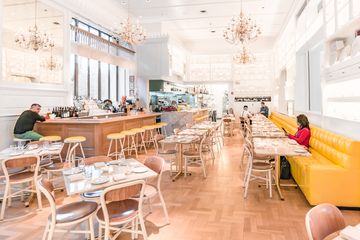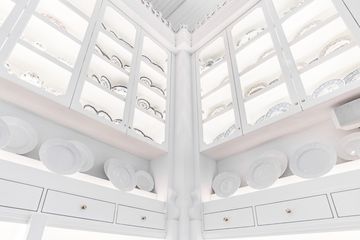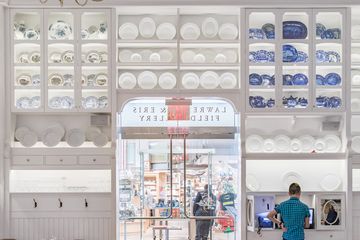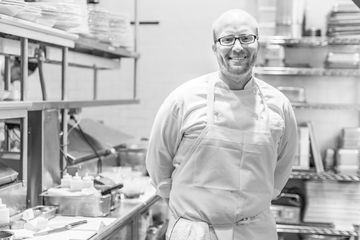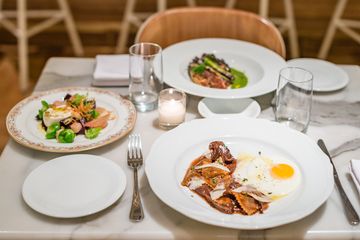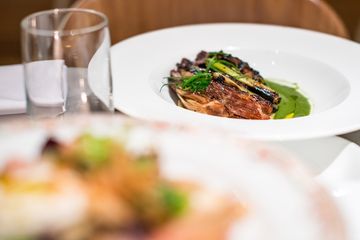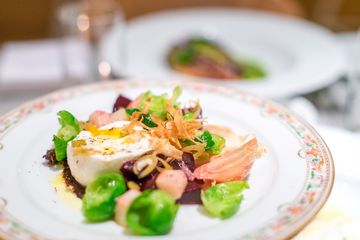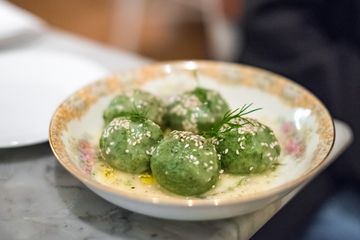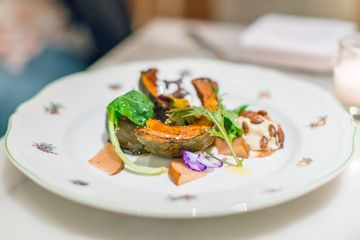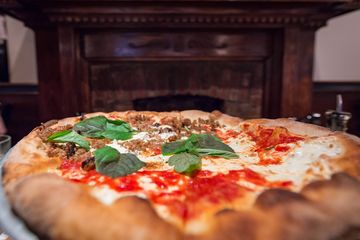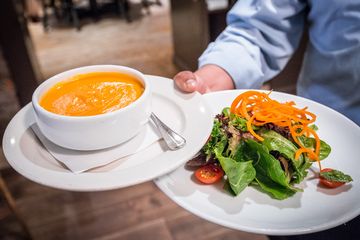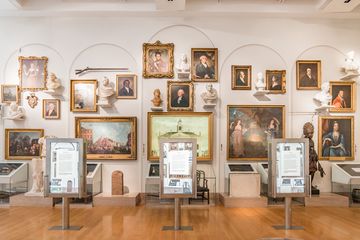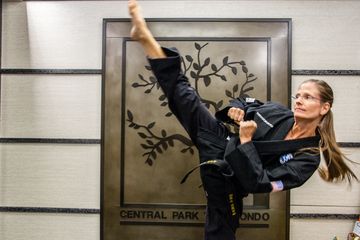
Through the double glass doors connecting Caffe Storico to the New York Historical Society, I pointed out the Holiday Express trains, circling round and round to Olivia and Tom. I had been a frequent guest in both the museum and the restaurant for several years, but was eager for these two members of the Manhattan Sideways team to have an equally special experience. In keeping with its name (translated from Italian, Storico means "historic"), the decor is chock full of towering shelves stacked with antique china plates. Standing in awe, Tom and Olivia noticed the other touches, including the chandeliers hanging from the incredibly high ceiling.
Despite the fact that the restaurant is operated separately from the museum, they have a mutually beneficial relationship. Manager Edward Krebser and Gabriel, the assistant manager, told us that the nineteenth century plate ware behind glass is from the museum's collection, and that every other element of the design was carefully chosen. The wood floors, marble tabletops, and Italian pipe chairs were all specifically selected to form a cohesive whole. The restaurant space used to be the Lawrence and Eris Field Gallery, and so the room is accustomed to displaying works of art.
Caffe Storico’s interior design is not the only work of art – the food is beautifully and deliciously crafted. The three of us were treated to a sampling of dishes. Tom and Olivia tasted the pork belly, while I had one of my favorite dishes, a Burrata with fall vegetables. When Caffe Storico first opened, it had a more northern Italian style. Now, the menu has swayed in a more local, sustainable direction. Ed Crochet, who worked at Craft before going in search of an opportunity to cook Italian food, is now the chef. With a specialty in handmade pastas, Ed told us that he is "trying as best as possible to be seasonal.” He focuses not so much on what is Italian as what is available locally and tastes the best. “I’m not using the old recipes as gospel and I’m trying to be creative with what the notion of Italian food is.” I must confess that one of the most amazing dishes that I have tried on my journey walking the side streets has to be the spinach and ricotta strozzapreti. These small balls filled with goodness have a soft texture and buttery flavor like nothing I have eaten before. They were so incredible that only a few days later, I made a reservation to dine at Storico with my husband and friends. I needed others to experience this remarkable creation. When Chef Crochet realized that I was a vegetarian, he presented us with several other noteworthy plates of food: The mushroom triangole with swiss chard was delectable, as was the squash with pear puree and pumpkin seeds, presented like a little fairy feast gathered around the roots of a tree.
Gabriel sat down and chatted with us while we were consuming our spectacular meal and shared that after opening in 2009, there are still people in the neighborhood who wander by, suddenly see the tops of liquor bottles from the bar through the window, and wonder what is inside. Locals are still discovering the restaurant each day. As Edward phrased it, “They live three doors down, but they didn’t know we were here for years." He added, “I just want people to know about the restaurant.” And so do I, because it is what I would describe as an Upper West Side hidden gem.
